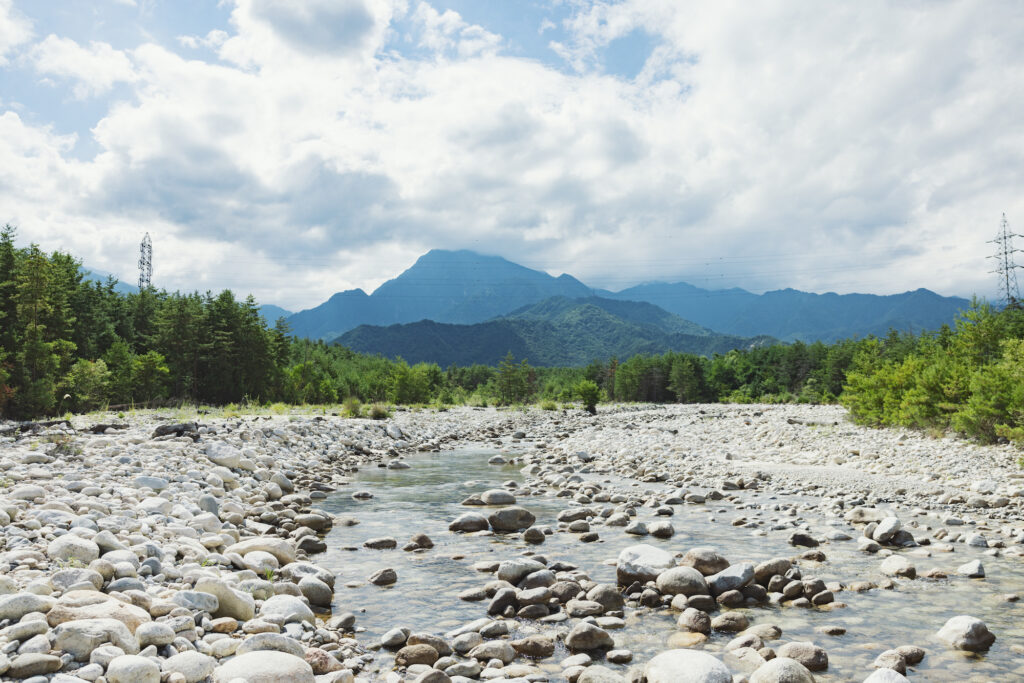
Azumino City in Nagano Prefecture is surrounded on all four sides by majestic mountains and hills. It was here that we met with Ryosuke Goromaru, a landscape architect who took the bold step to relocate from Yokohama to Nagano based on shared desire with his wife to “raise their children in the forest.” For this trip to Azumino, PAPERSKY Editor Lucas was joined by Takeshi Kojima, the proprietor of popular cafes in Nagano and Matsumoto. As they munched on fluffy, delicious muffins baked by Kojima-san, they talked about life and culture in the Shinshu region as well as the Goromaru’s home and the ideal lifestyle they envision.
Traveler / Lucas B.B.(PAPERSKY Editor)
Guest / Tsuyoshi Kojima (Owner, amijok, cafe in Matsumoto City, and North South East West, cafe in Nagano City / Resident of Matsumoto City)
Host / Ryosuke Goromaru (President, Gardenholic / Resident of Azumino City / Owner of BESS home)
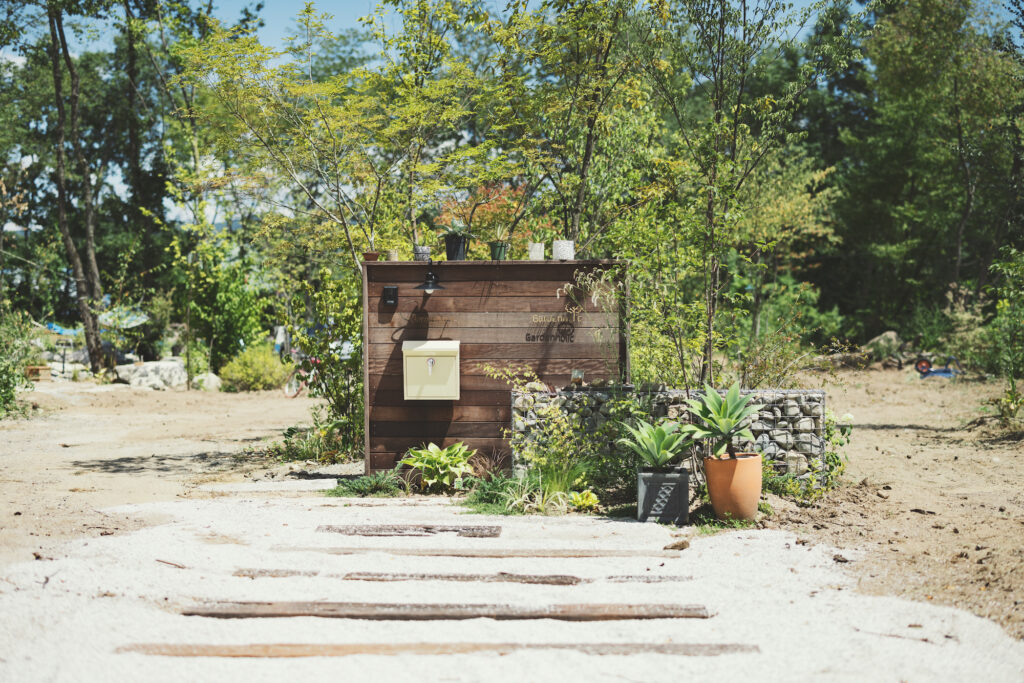
1. Living the best life in the second BESS home
Goromaru-san, who is originally from Matsumoto City, used to live in Yokohama, Kanagawa Prefecture, where he worked as a landscape designer. After five years of hard work, he returned to Matsumoto to build the BESS house he had always wanted. He has established his own landscaping company, Gardenholic, and every day, he devotes himself to designing and creating beautiful and lush gardens. His nearly 5,000m2 plot of land features a dreamlike garden landscape that seamlessly transitions into the surrounding nature—a place where his children can play to their heart’s content. In the near future, he says he would like the entire site to function like a showroom where visiting customers can receive inspiration for their own landscaping projects.
Lucas: ”Your garden is amazing. Not many people live on plots of land as big as this one.”
Goromaru: “This is actually the second BESS house that we have built.”
Lucas: “Really?”
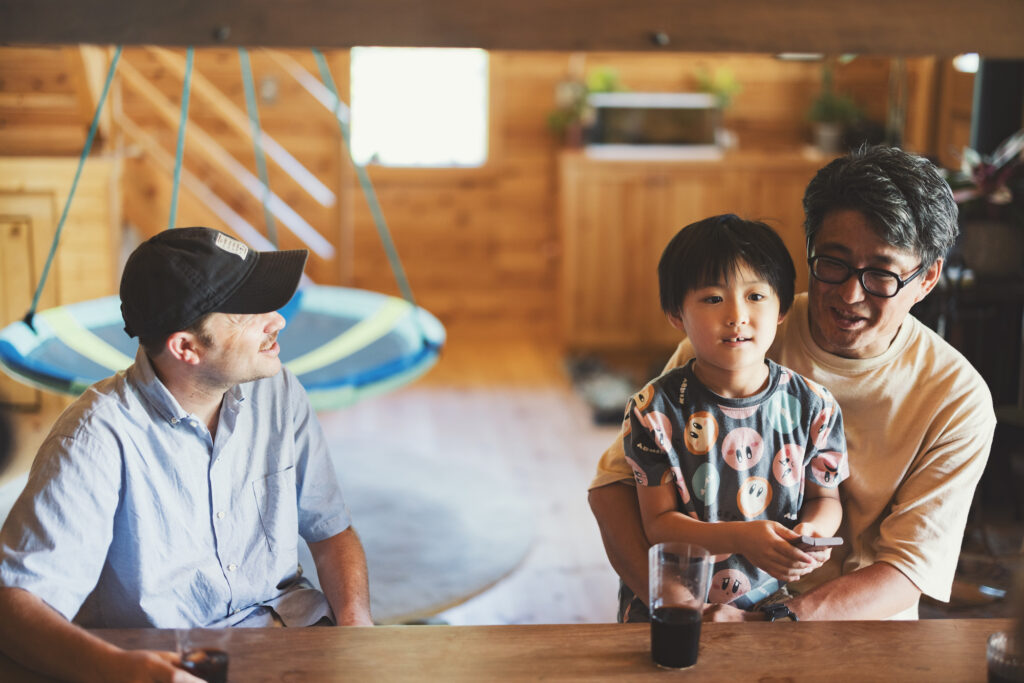
Goromaru: “My wife is also from Matsumoto, and we decided to move here because we wanted to raise our children in the countryside. So, when our first child was born, we first purchased a 330 m2 plot of land in Azumino and built a BESS house. Since I am in the landscaping business, however, I wanted to have a kind of exhibition space for my company (laughs). Due to the nature of my work, I needed a place where I could put sample trees, heavy equipment, and lumber, so I was looking for plot of land that was at least 5,000 m2, and I just so happened to find this place.”
Lucas: “So, you decided to build another BESS house?”
Goromaru: “Yes. Our previous house was a Country Log, but we decided to change things up and went with the G-LOG. I first encountered BESS many years ago, but when I saw a BESS house again in a magazine, I went to LOG WAY (the BESS showroom) in Tokyo and was completely sold. What I saw on offer there was not housing per se, it was a way of life. With the simple log houses, you can do whatever you want in terms of interior design and furniture; you can create anything you are able to imagine. It is like imagining a way of life and then creating it as you live there. My wife accompanied me to LOG WAY, and we both agreed that this was the only way to go. We chose the G-LOG because we wanted to view the garden I designed from the NIDO (deluxe open-air veranda). We also enjoyed the livability and the fact that the children could have their own rooms.”
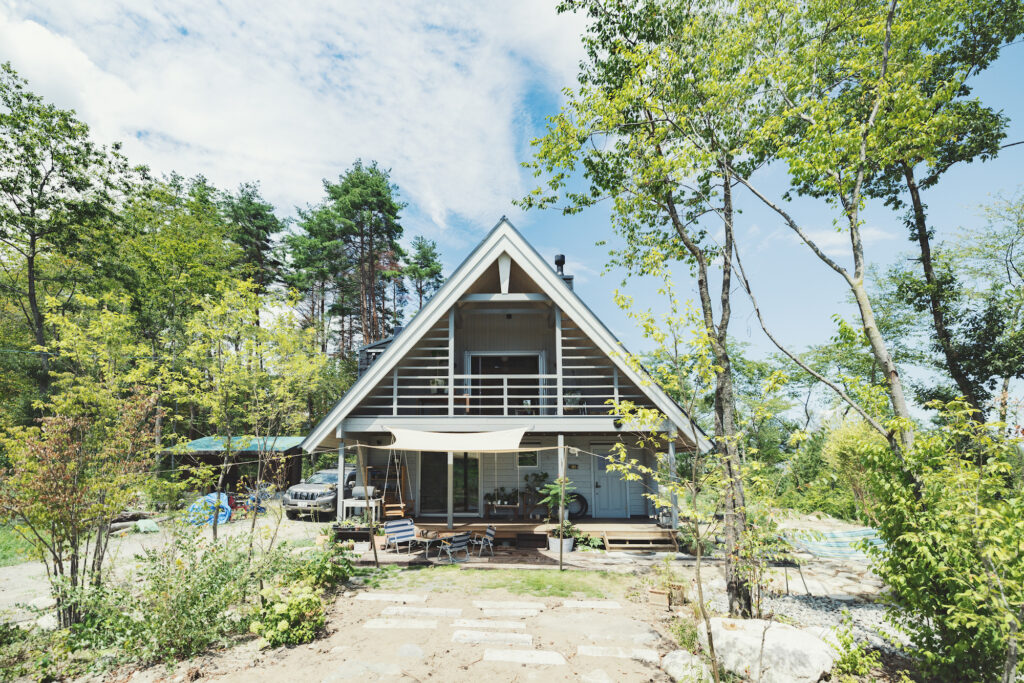
Kojima: ”There’s something about this piece of land, isn’t there? There seems to be an atmosphere of being one with the forest.”
Goromaru: “Ever since I was young, I always said I wanted to live with my wife in the forest. With our first BESS house, however, we did not choose that kind of environment, so we planted a lot of trees that would grow in Azumino and made our own forest (laughs). I liked it there, too, but as the scope of my work expanded, I began to develop an idea of what I wanted to do next. I wanted our children to be able to play safely in nature and in the garden, I wanted to build an exhibition space in the forest of Azumino, and I wanted to use that space to communicate the scenery that is unique to Azumino to Nagano Prefecture. We put out our feelers and were looking for a large piece of land, so when we happened to find this plot, we decided to give it our all and build our next house. When we moved, the trees that we had planted in front of our old house also moved with us (laughs).”
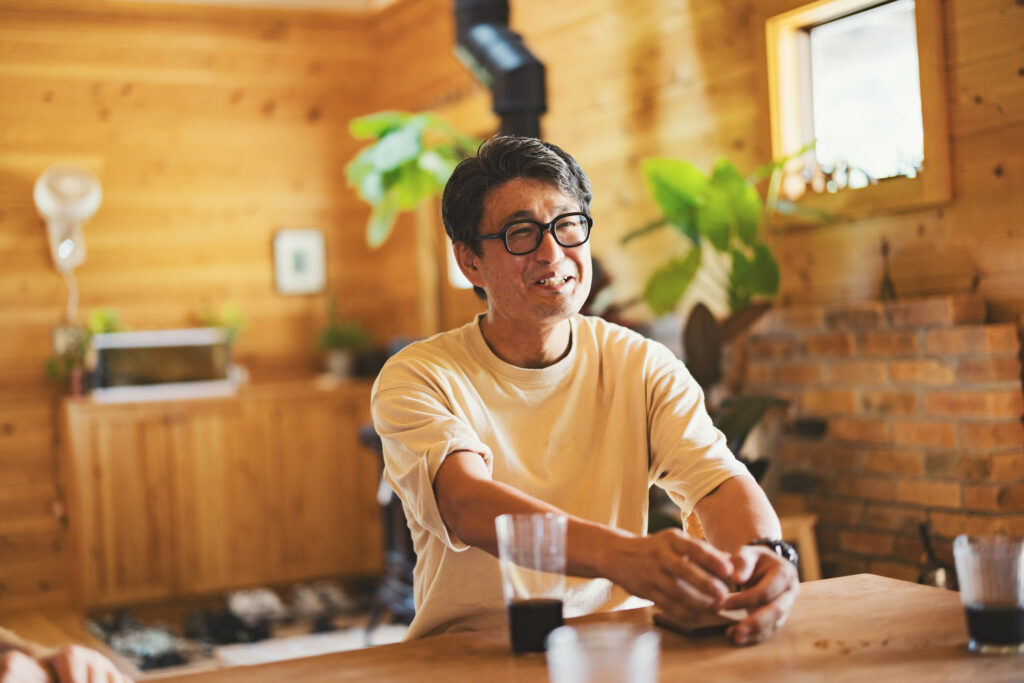
Lucas: “I suspect living in a place like this has a good impact on your landscaping business.”
Goromaru: “Indeed it does. Every day, I can feel the connection between the landscape of Azumino—the fields, the forests, and the Northern Alps—and the people and other living things, and this puts me in the right mindset. When I am working in the garden, people walking will say hi to me, and sometimes that leads to a new job. When a client asks me to create a garden, I place value on creating a story of the connection with nature. I want people to be able to make little discoveries every day as they walk that few meters through their garden to their front door. It is not just about designing a beautiful garden; it’s about creating a story of the changing seasons, your attachment to the garden, and passing something on to the next generation. For example, the caterpillars of the Great Purple Emperor, the national butterfly of Japan, feed on the leaves of the Japanese hackberry tree, which also grows in Azumino. If a father tells his child, ‘This tree called the Japanese hackberry is what Great Purple Emperor caterpillars feed on, so you can see the national butterflies of Japan take off from this garden,’ those trees will not only become part of the family’s memory, the child will also realize that the tree and the garden are a part of nature that contribute to the earth. So, that father might be able to leave behind aspirations as well as a space for the next generation. There are many other tress, plants, and flowers like this. Here, I also feel this connection with nature every day.”
Lucas: “So, it’s highly fulfilling?”
Goromaru: ”Yes. I find every day to be enjoyable and wonderful.”
Lucas: “What do you do on your days off?”
Goromaru: “More and more, I spend the whole time playing with my children on this property. There are many living creatures here, and we can also go to the river. The other day, three generations of us—my father, myself, and my children—all went to the river to fish. That’s the kind of childhood I had, so nothing makes me happier than giving my children many of the same kind of experiences.”
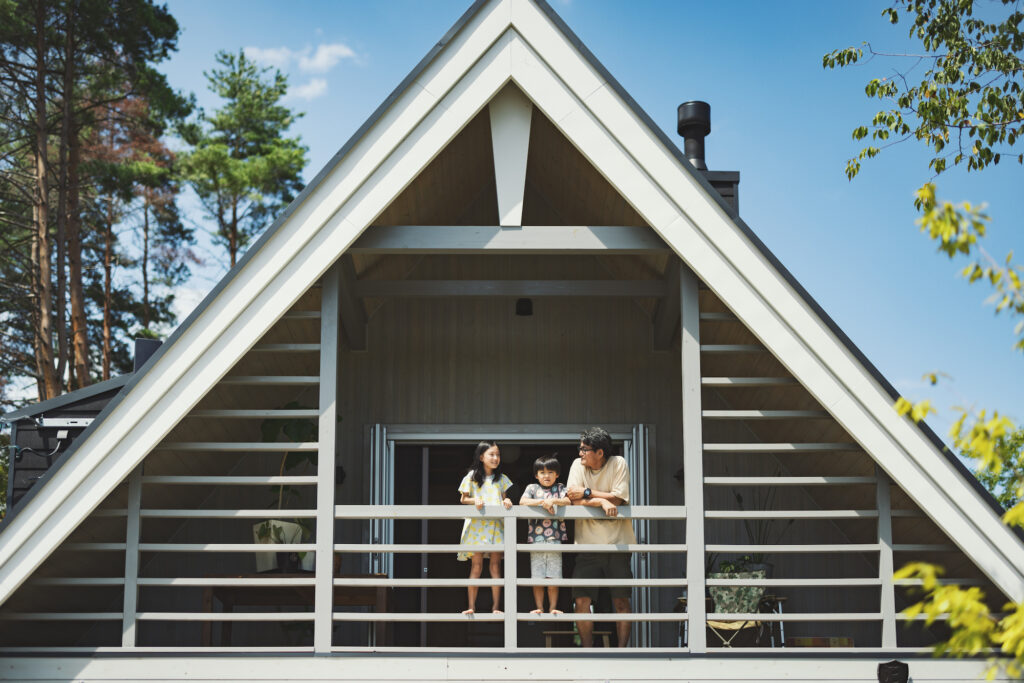
2. Nagano is about to get a lot more interesting.
Goromaru says he is more than satisfied his lifestyle and his work style in his BESS home. Meanwhile, Kojima-san, who runs two cafes, seemed to have several questions for Goromaru-san. But that is no wonder, because Kojima-san is getting ready to build his own house. From this point onward, the conversation turned to the topic of the ideal piece of land.
Kojima: “When you run a cafe, you end up working from morning till night. I started my first cafe in Matsumoto City, and my second one is in Nagano City. We have been going back and forth and have no base of operations where we can settle down, and since my wife and I have been running the cafes as a couple for so long, I don’t feel like we have been looking out for the children. This is why we started thinking seriously a couple of years ago that it was time for us to find a place where we could get some relief.”
Lucas: “What kind of place are you looking for?”
Kojima: “We would like to build a house somewhere with a relaxing landscape where we can breathe freely. It would be even better if the plot was connected to the natural environment like Goromaru-san’s property. For the past ten or so years, my wife and I have been manning the cafes every day without taking any time off, so I think it’s time for us to start living life with an awareness of the ‘space in between,’ you know, that sense of down time.”
Goromaru: “So, you really like Nagano?”
Kojima: “Yes, I love it. For me, I like to be able to go mountain climbing whenever I want. I can take a day trip to the Northern Alps, and there is also a river running through the city. I’m originally from Matsumoto, but the vibe in Nagano is good.”
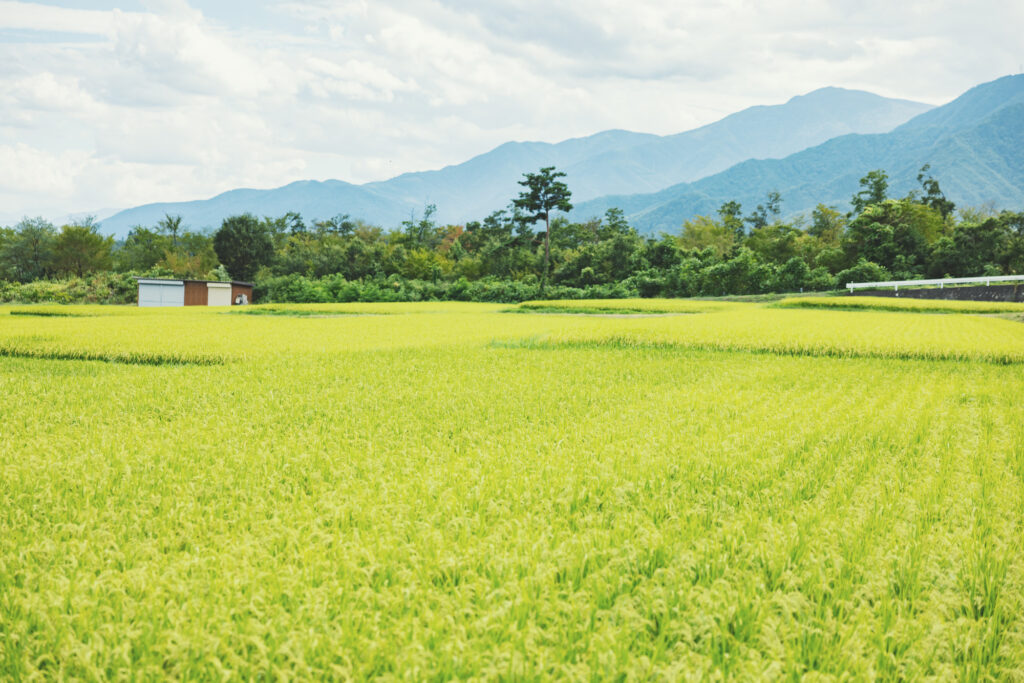
Lucas: “To me, it seems to resemble Colorado in the United States. There are wide open plains, and many fields where you can see mountains in the distance. And then there’s the people. I think the people of Nagano hold nature in high regard. Places like that also have a lot of cultural diversity.”
Kojima: “It seems to me that more and more people are starting to realize the good qualities that Nagano has to offer. When transplants move here, they set up new shops and businesses, and this creates a new kind of culture. And given Nagano’s proximity to Tokyo, I think the number of people who live in Nagano and work in Tokyo is increasing.”
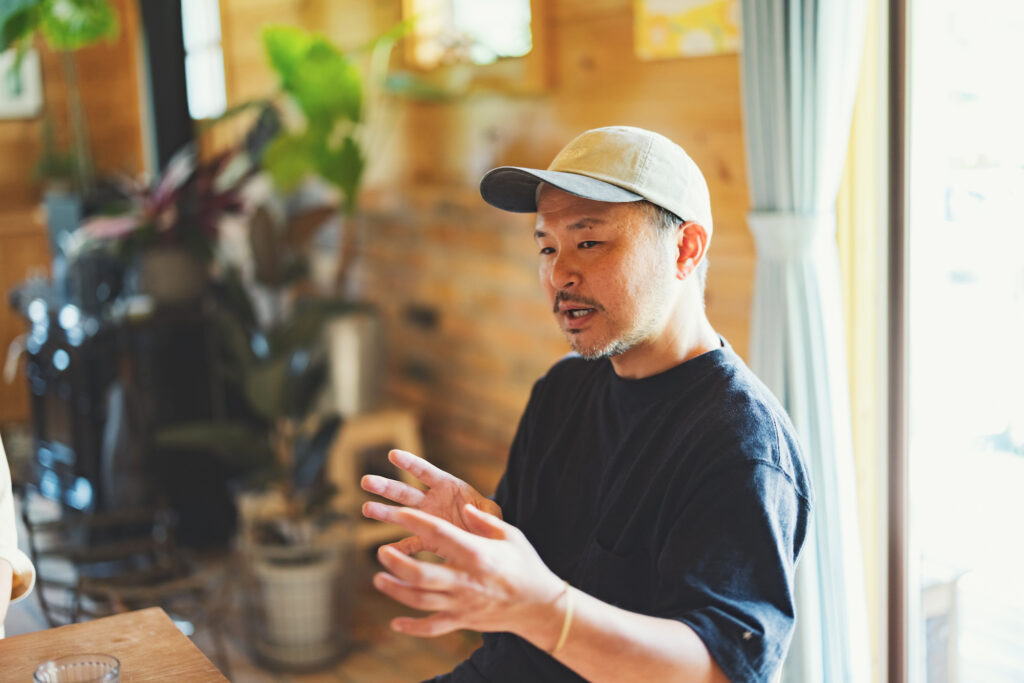
Lucas: “Speaking of which, what led you to open a cafe, Kojima-san?”
Kojima: “I didn’t just want to have my own shop. I wanted to create a place that was like a port of call for my customers. Does that make sense? People can come and go freely, which leads to unexpected interactions, and something like cultural seeds can start to sprout. That’s the kind of place I’m talking about.”
Lucas: “I just remembered that when I went to Kojima-san’s cafe, we ended up playing frisbee in the open space next to the shop.”
Kojima: “Right! Then some kids showed up. That’s exactly what I’m talking about. It’s a good vibe, isn’t it? Those kids showed up wanting to play frisbee with us, and it got lively.”
Lucas: “Are places like that open space on the decline in central Nagano?”
Kojima: “Yes. What I see is old buildings being torn down and turned into condominiums or coin-operated parking lots as soon as they are bought up. When I see places where there are parks, but there aren’t even children playing in them, it makes me wonder if parents everywhere are too busy to play with their children. I think it would be good if everyone aimed for a slower lifestyle. The same applies to me (laughs).”
Lucas: “Well, Kojima-san, why don’t we have some muffins and take it easy.”
Kojima: ”Okay!” (sound of bag rustling as Kojima-san pulls out the homemade muffins he brought)
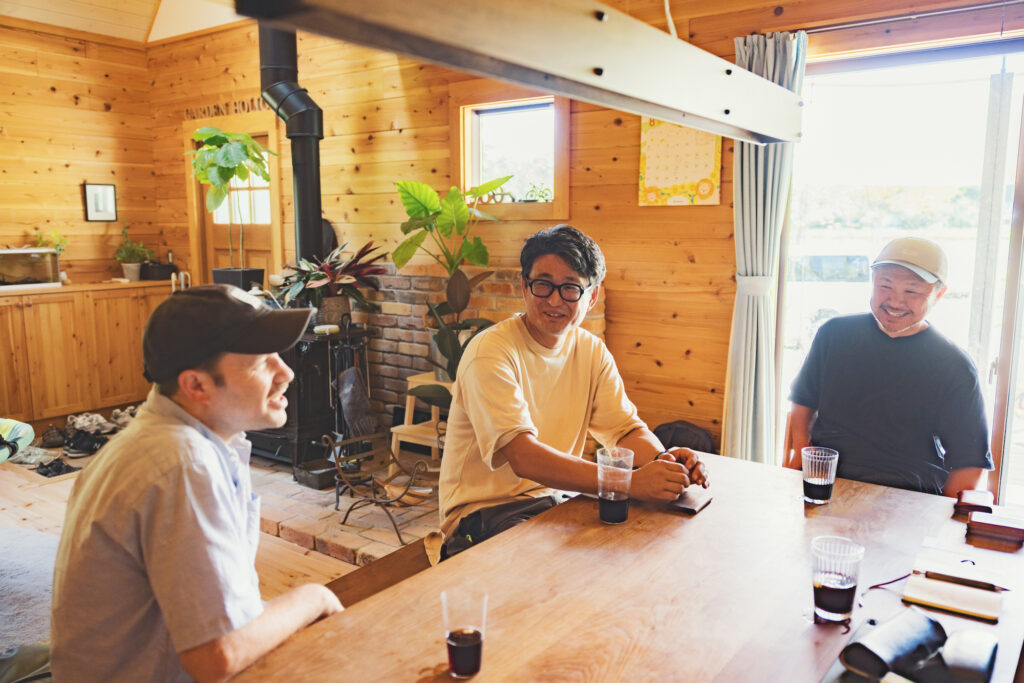
3. Aiming to create a place where people congregate naturally
This is the part of the conversation where several types of muffins from Kojima-san’s cafe, amijok, made an appearance. He bakes a variety of delicious muffins made using a flavorful blend of Nagano wheat flour and roasted brown rice flour, which is known for holding moisture in. With flavors like chocolate, peach, and green tea, the rich muffins and cups of coffee took the conversation into an even more relaxed and leisurely direction.
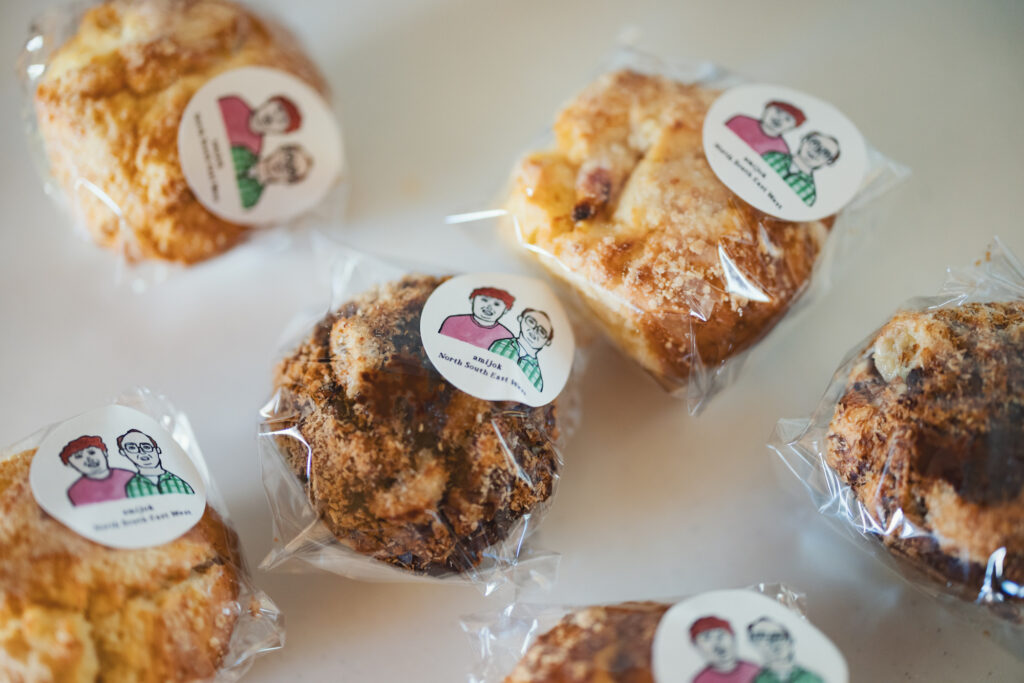
Goromaru: “It’s better to have emotional leeway than financial leeway. When I was a student, this is something that I learned was important from the president of a trading company.”
Lucas: “I like that.”
Goromaru: “That president took me to his villa in Hiruzen Kogen. When I heard what he said and saw how he acted, I realized that it’s only natural to live freely on your own terms.”
Kojima: “I can relate to that. I used to love to travel and did a lot of traveling on a shoestring budget. As I met all kinds of people, I came to realize that it’s good to be free.”
Lucas: “That’s something they don’t teach you in school.”
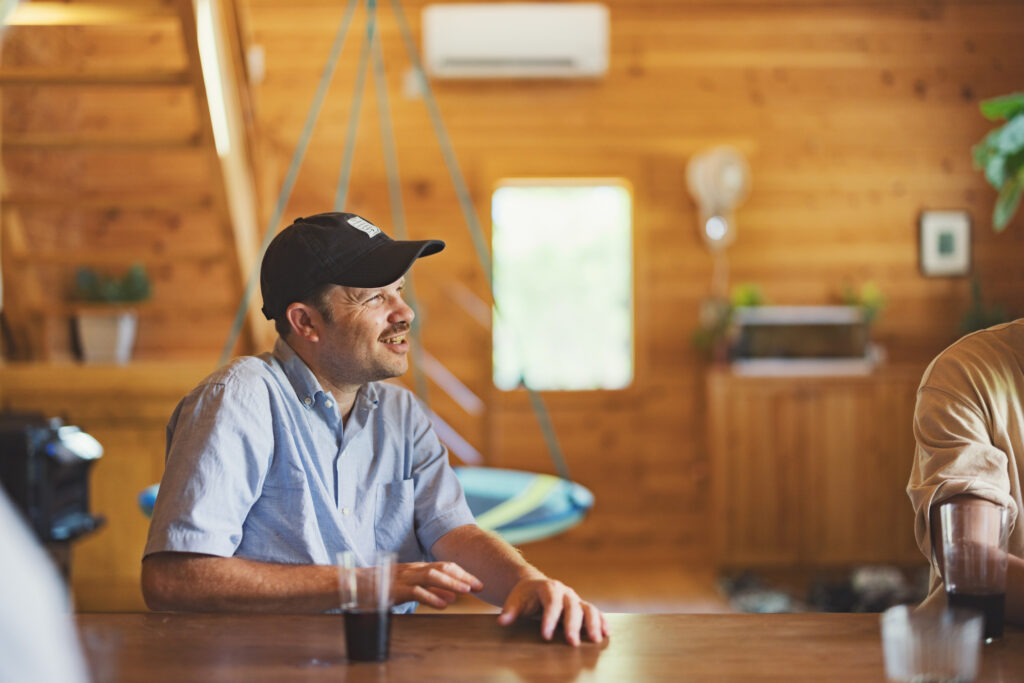
Goromaru: “That’s because we were taught that we had to graduate from a good school and get into a good company. Perhaps this is unrelated, but I called my company Gardenholic. You know, because I love gardens so much (laughs). I chose this job because I love it, so it doesn’t bother me if it keeps me busy.”
Lucas: “A society where everyone does what they love and has a bit of breathing room is good. Is that what keeps you going with garden design, Goromaru-san?”
Goromaru: “Indeed it is. I’ve been wondering how I can transcend the boundary of gardening and, if even just a little bit, preserve the Shinshu-esque atmosphere in the city. I hope that creating these kinds of environments will make Nagano a more comfortable place for the people that live here and help make the Shinshu region more attractive.”
Lucas: “How will you do this?”
Goromaru: “The idea is to gradually create Matsumoto-like, Azumino-like, and Shinshu-like wooded spaces in the city.”
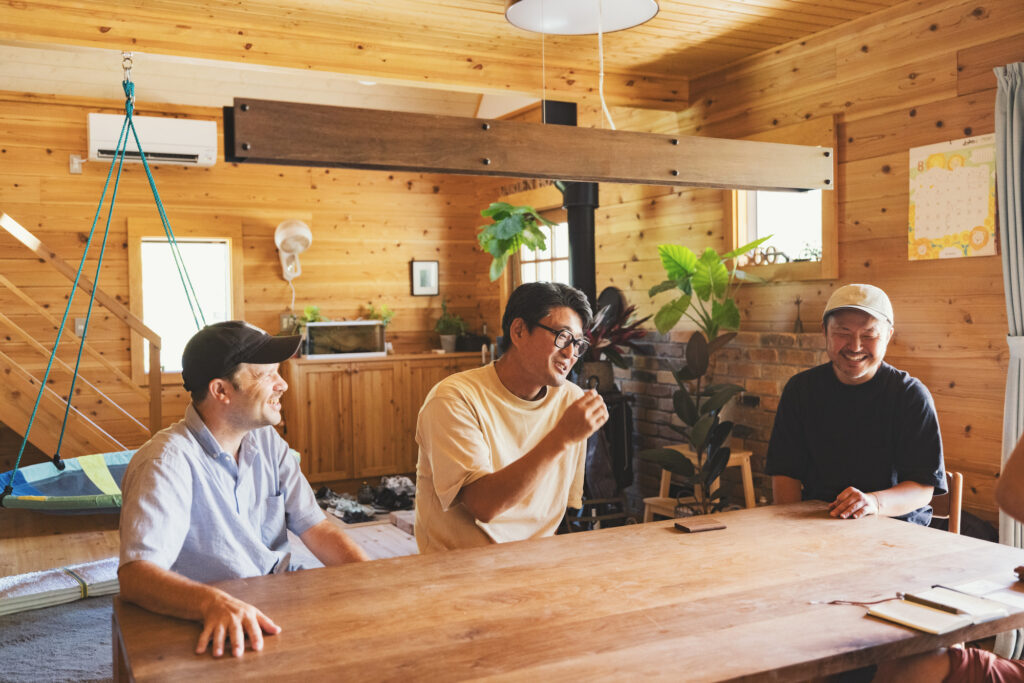
Kojima: “So, you mean doing something other than planting roadside trees?”
Goromaru: “Instead of just planting one kind of tree, I want to plant several species, all of which are native to Nagano Prefecture. That, in and of itself, will lead to forest-like landscapes. You can even create that kind of environment in fairly narrow spaces. I want people to get a sense of what Shinshu used to look like.”
Lucas: “Do you have a name for this concept?”
Goromaru: “In landscaping, there is a field called woodland garden design. It is similar to that. In olden times, people living in the satoyama collected firewood to make fires and gathered food, all while maintaining the mountains. It is thanks to human involvement that a forest can stay healthy and vibrant. With wooded areas like this in the city, the people who live and work there can collect firewood or nuts. That is the kind of relationship I am talking about. Think of the people who live here, the creatures that live in the satoyama that is typical to the Shinshu region, and nature thriving as part of a slow lifestyle… I envision this kind of landscape becoming a part of town’s cultural fabric.”
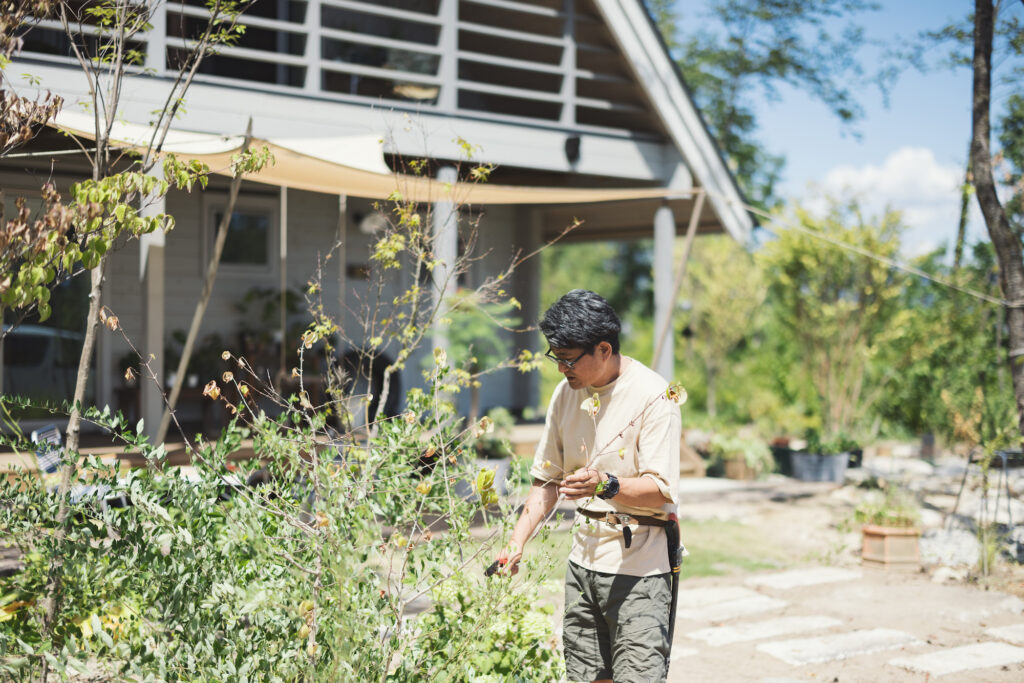
Kojima: “I like that. I hope we can achieve something like that in Matsumoto as well. Matsumoto has a lot of rental bicycles, so if there were places to rest like the ones Goromaru-san has mentioned, these would become invaluable to cyclists.”
Lucas: “It would be great to see the people living in Nagano gradually putting various ideas like these into practice and making the city more interesting.”
Kojima: “I agree.”
Lucas: “Anyway, these muffins are delicious! Nom nom!”
Kojima: “Oh, thank you!”
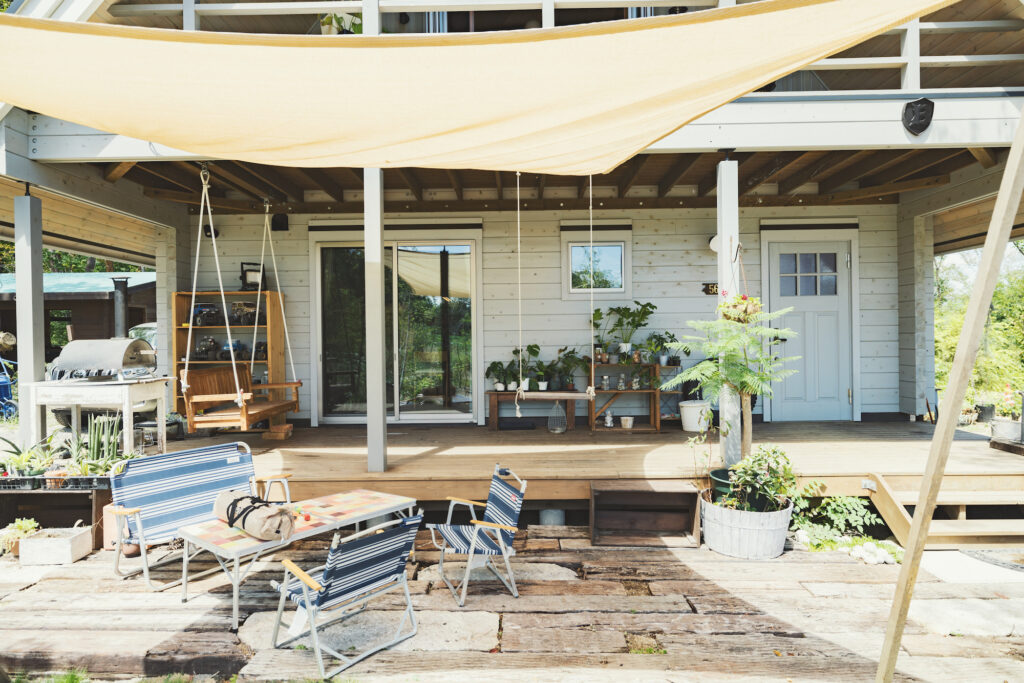
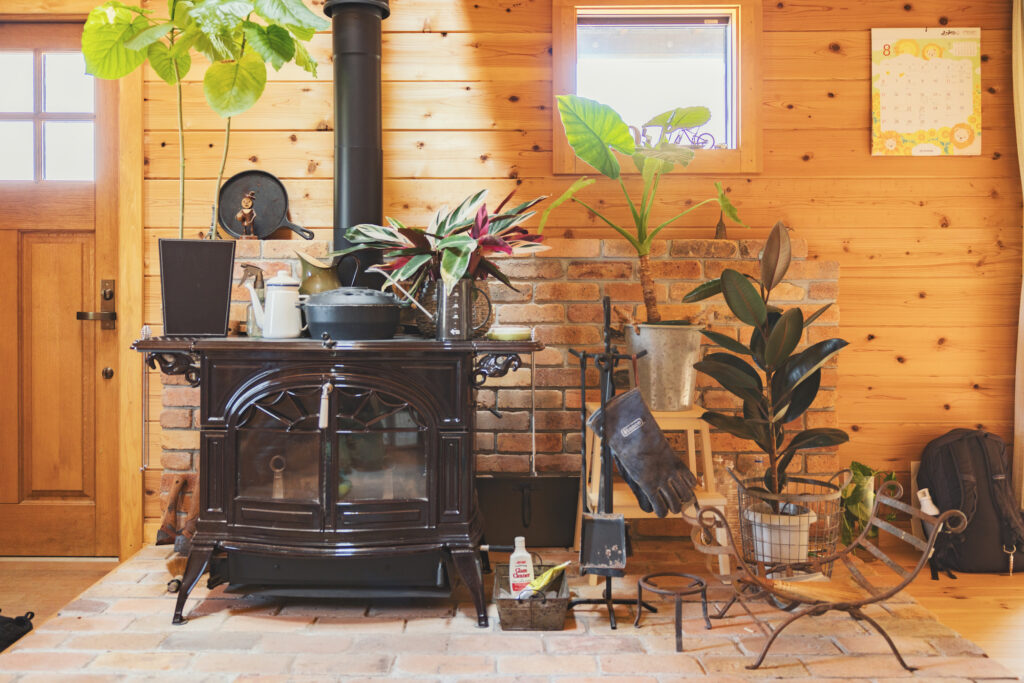
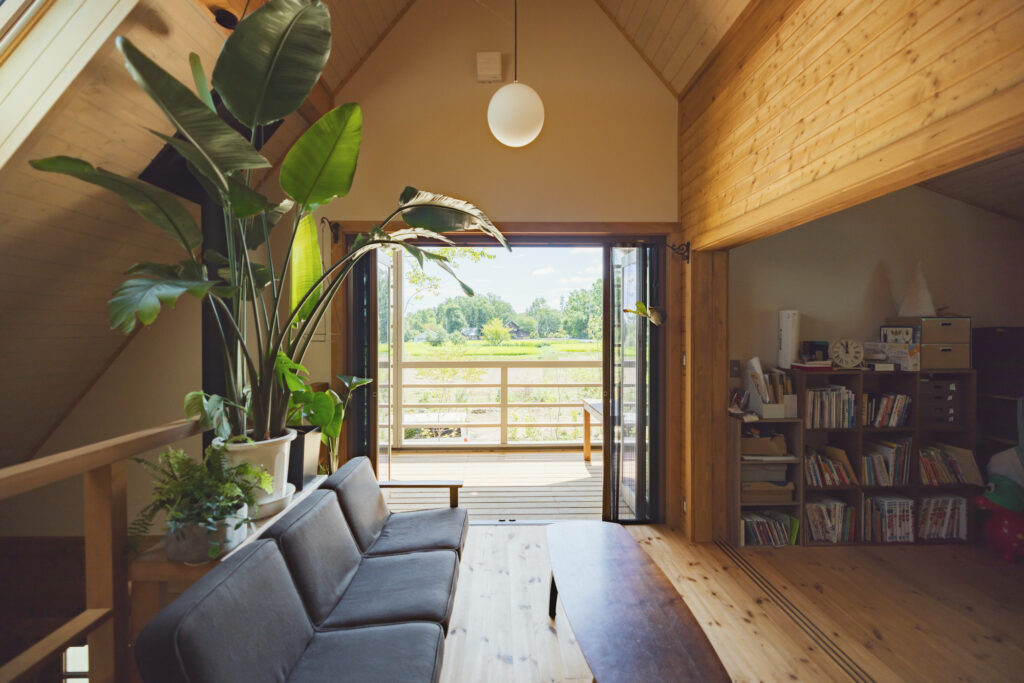
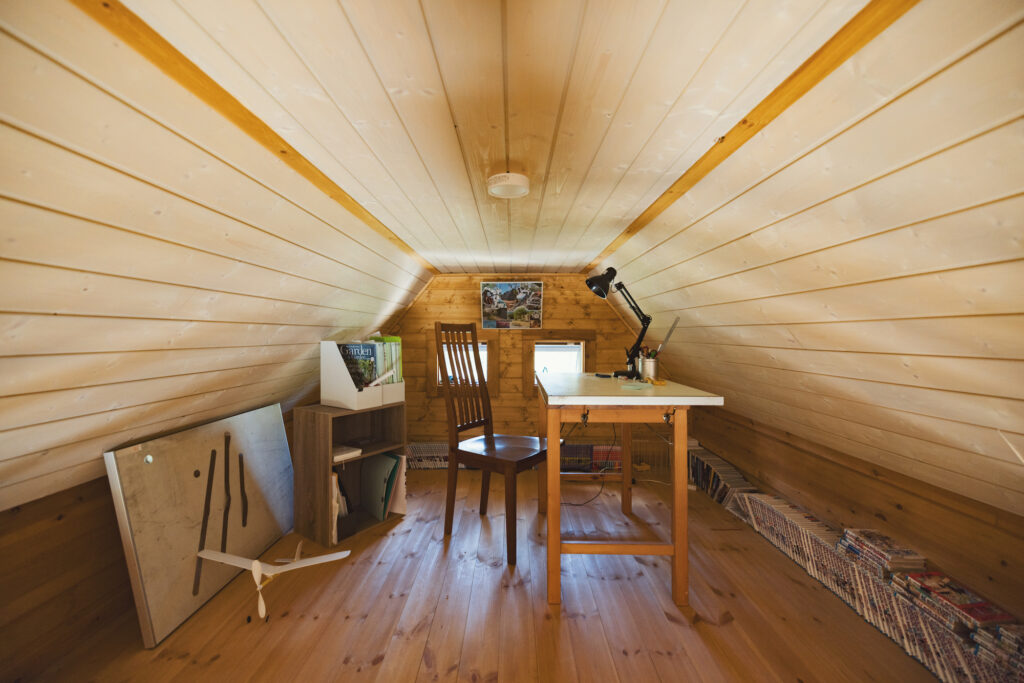
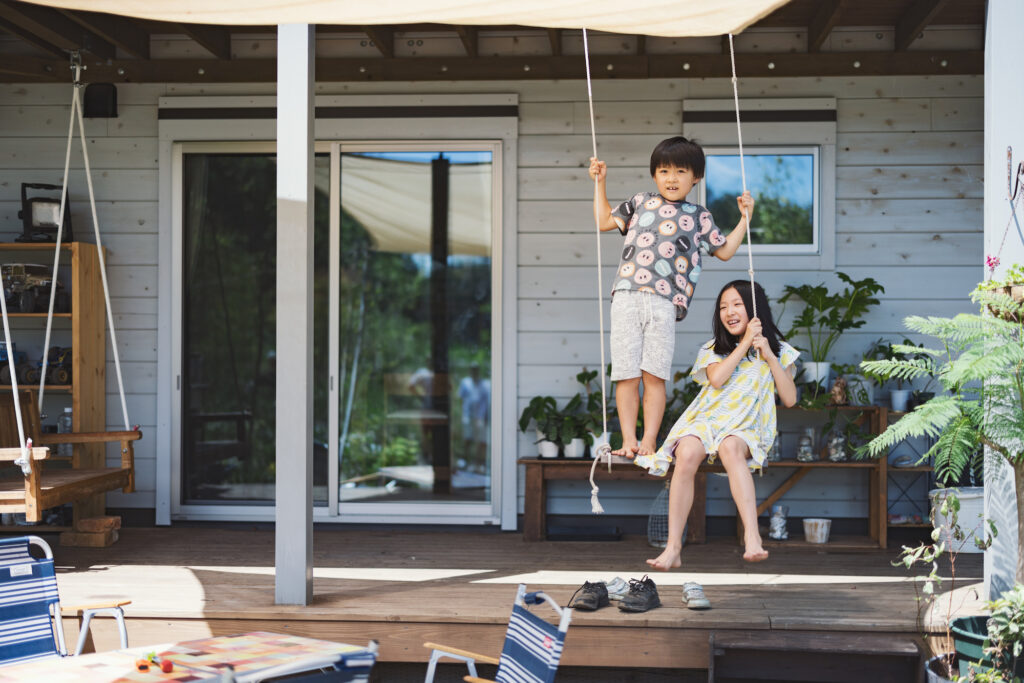
BESS Homes
https://www.bess.jp











